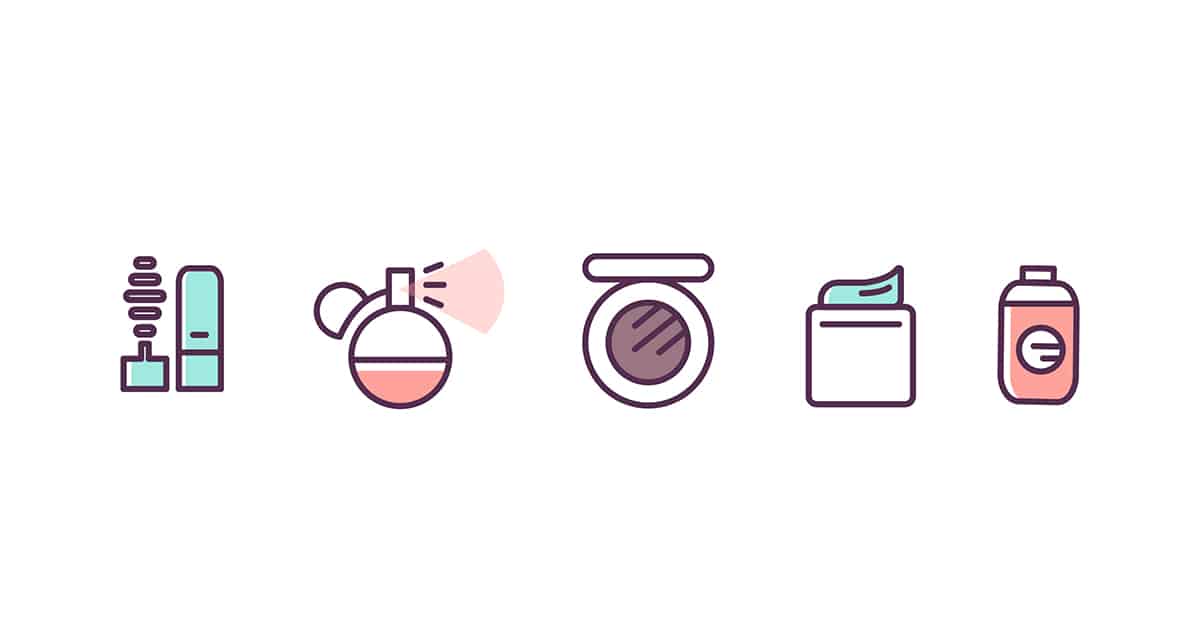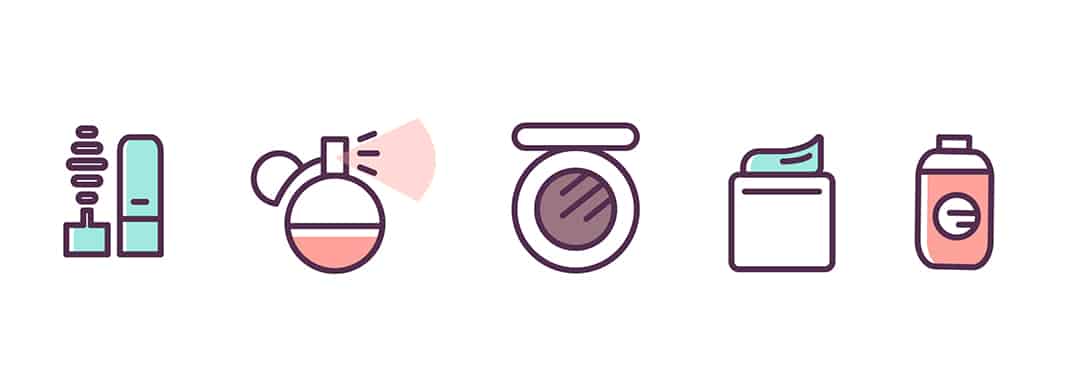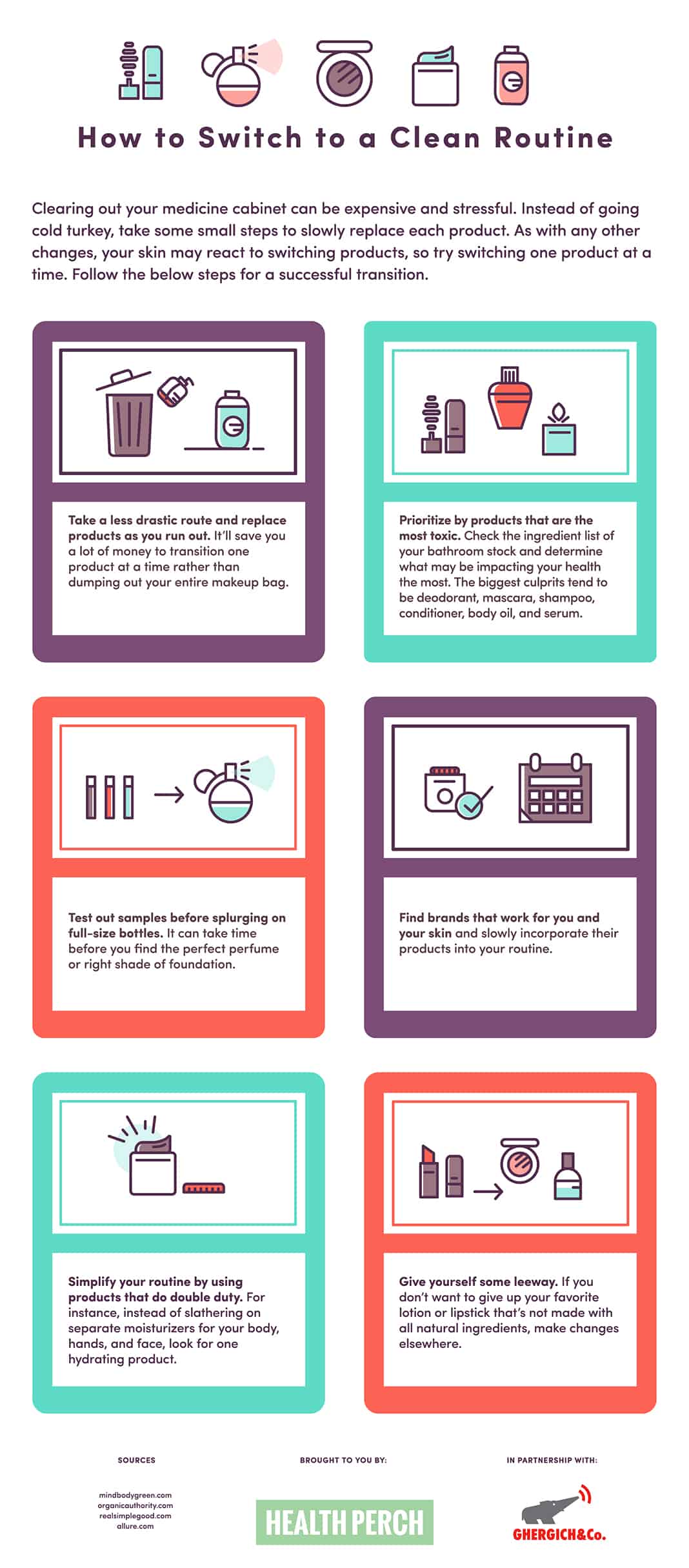The natural beauty industry is booming and there’s good reason. As consumers become more conscious about what goes in their bodies, they’re also thinking about the ingredients they put on them. Mainstream beauty products often contain harsh chemicals that are not strictly regulated. Plus, one study reported that the number of complaints to the FDA regarding allergic reactions has increased. While natural beauty products aren’t regulated either, we tell you what to look for when selecting safer products, and how to make the transition to a cleaner beauty routine.
Why You Should Make the Transition
The products in your makeup bag may contain chemicals that can lead to adverse reactions when absorbed by your skin. One study found that even a short break from products with certain risky chemicals resulted in a significant drop of hormone-disrupting chemicals (i.e. some makeup products can negatively alter hormone levels). Check product labels for the following ingredients that research suggests may have negative health consequences.
Toluene: Found in nail polish and cosmetics, toluene is a petroleum byproduct that can affect the central nervous system as well as immune, kidney, liver, and reproductive health.
Synthetic formaldehyde: This ingredient can be found in nail polish and hair relaxer and is toxic to the liver.
Aluminum: Commonly found in antiperspirant deodorants, aluminum has been linked to breast cancer. While there’s no hard evidence supporting the correlation, there are plenty of natural deodorants that do not contain aluminum.
Parabens: These synthetic preservatives are found in cosmetics, lotions, and other personal-care products to help extend shelf life. They can penetrate the skin and are believed to disrupt hormone function.
Sodium lauryl sulfate: Typically found in shampoos, this chemical is responsible for creating the suds and foam many products are known for and can be irritating to the eyes.
Synthetic fragrance: Hundreds of chemicals can hide in synthetic fragrances, and manufacturers aren’t required to list them out. About 75 percent of products listing fragrance contain phthalates, a compound that may negatively affect hormones. Synthetic fragrances have also been linked to liver and breast cancers.
Don’t Fall for Products Marketed as Natural
Manufacturers can easily market their products as natural, clean, or organic since there are no federal guidelines regulating these buzzy words. To verify if a product is the real deal, you’ll need to read the ingredient list. The Environment Working Group’s Skin Deep database is a great resource to research and learn about ingredients before you invest in a new product. Look for natural ingredients that you can pronounce, such as rosehip seed oil or seaweed. Some natural ingredients can be listed by their Latin names so the Skin Deep database can be helpful to help distinguish natural from synthetic. Below are common labels and what they actually mean.
Natural: Subjective to what the brand believes to be natural.
Organic: The FDA only requires that a certain percentage of a product be organic to use this label (this percentage varies by state). A USDA seal means a product contains at least 95 percent organic ingredients.
Chemical-free: Technically, nothing is chemical-free (even water is a chemical). Europe has banned the use of this label but U.S. companies can still use it freely.
Botanical: A manufacturer can add an extract or botanical ingredient and market the product as botanical. This does not mean it’s better or healthier than other products.
Dermatologist tested: This claim isn’t always honest. (A dermatologist can always be paid to back a product.)
Conclusion
Whatever approach you take to transition to cleaner products, remember to have realistic expectations and—more importantly—have fun! Use the time to discover new brands and ingredients, and practice self-care.


